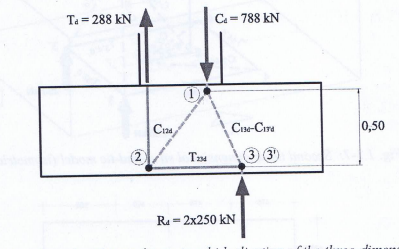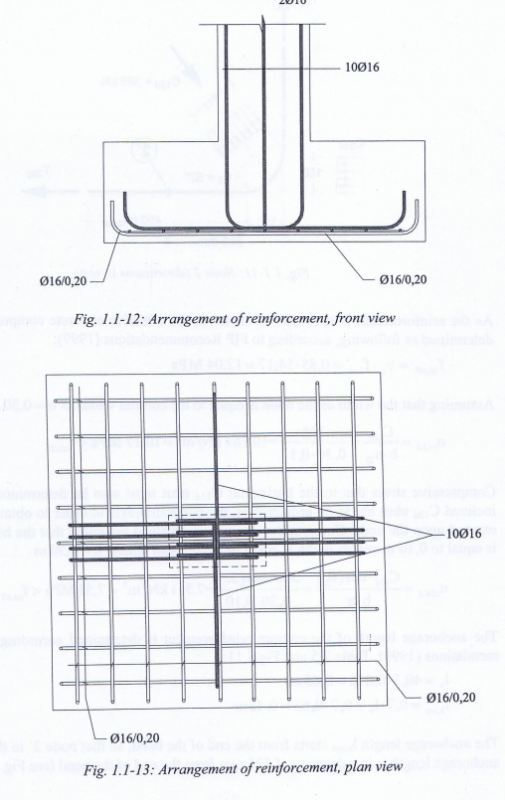LearnerN
Civil/Environmental
- Sep 9, 2010
- 102
I am considering a square footing design for a tall vertical vessel, the vessel of which will yield an applied moment at the top of footing pedestal due to wind load and such along the tall vertical vessel. (I'm a fairly new structural engineer and will have my design reviewed by another engineer, but I learn a lot asking questions on this forum to several different engineers.) In terms of concrete design specifically, there are two main considerations for this type of foundation with an applied moment that are different than a square footing with only a vertical load: (1) effect of applied moment on the punching shear (and one-way?), (2) design of pedestal/pier for flexure. Anything else that's different than for a square footing with only a vertical load?
My second question is specifically regarding the punching shear calculation as found in section 8.4.4 of ACI 318-14, and specifically the equations in 8.4.4.2.3. My understanding is that this is how to calculate the max factored two-way shear stress due to having an applied moment on the top of the footing pedestal (see Fig R8.4.4.2.3). Per Table 8.4.2.3.4 for an interior column, if it's a square column (b1=b2) with a nonprestressed slab (ie "footing", since it's talking about the slab-column connection), then gamma_f would be 1...which means gamma_v would be 0 (per 8.4.4.2.2), which means vu_ab or vu_cd would only be equal to v_ug since the other term in this equation would be 0 due to gamma_v being 0. If I'm correct in my understanding so far, this makes no sense to me because then the applied moment would contribute nothing to the two-way shear stress, right? Let me know if I'm totally off-base in my understanding of this section of the code. Thank you.
My second question is specifically regarding the punching shear calculation as found in section 8.4.4 of ACI 318-14, and specifically the equations in 8.4.4.2.3. My understanding is that this is how to calculate the max factored two-way shear stress due to having an applied moment on the top of the footing pedestal (see Fig R8.4.4.2.3). Per Table 8.4.2.3.4 for an interior column, if it's a square column (b1=b2) with a nonprestressed slab (ie "footing", since it's talking about the slab-column connection), then gamma_f would be 1...which means gamma_v would be 0 (per 8.4.4.2.2), which means vu_ab or vu_cd would only be equal to v_ug since the other term in this equation would be 0 due to gamma_v being 0. If I'm correct in my understanding so far, this makes no sense to me because then the applied moment would contribute nothing to the two-way shear stress, right? Let me know if I'm totally off-base in my understanding of this section of the code. Thank you.


